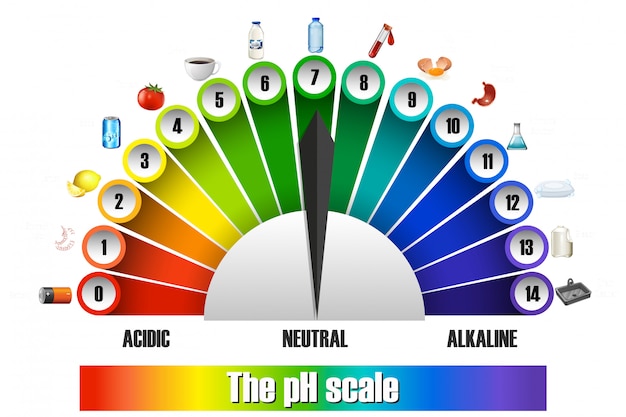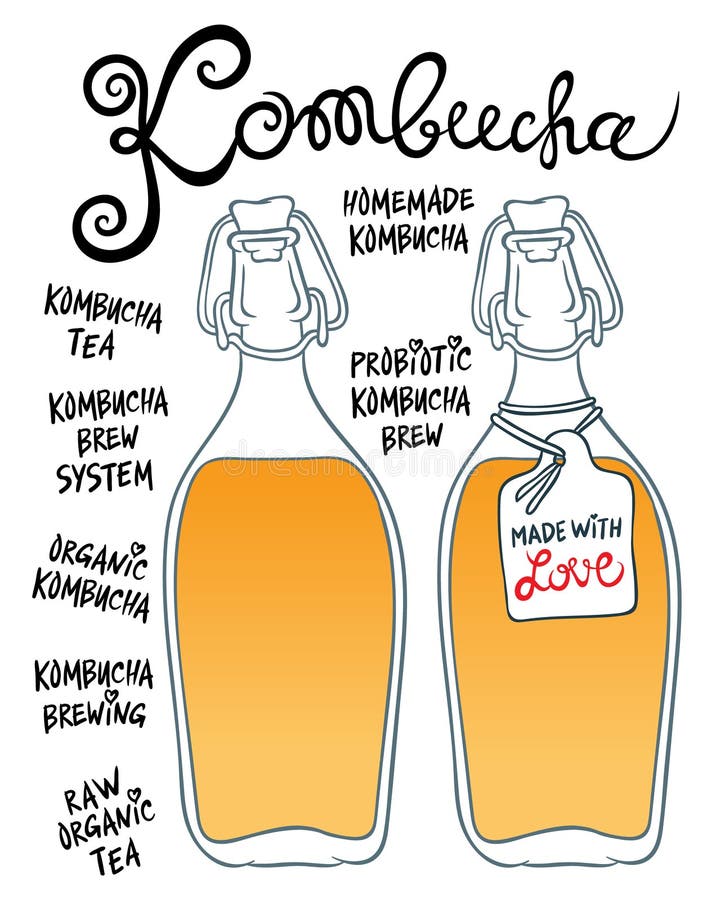Shameless plug: With the best free educational resources (Raw-U), the most robust free brewing tools, and the most outstanding organic scobys, kombucha kits, tea blends, flavoring blends & more, we can help you reach your brewing goals. So check out our products — that’s an order, Booch! 😉 #rawbrewingco #ilikeitraw
Kombucha and pH - Comprehensive Guide
Always check your brew's pH when starting a new batch!
We get a lot of questions here at the brewery about kombucha pH -- and whether or not you need to check it. The most common one is "do I really need to check my brew's pH?" Like most things in life, the answer for the home brewer isn't always black and white, but here's the philosophical answer: "do you want your brew to taste great every time, be consistent every time, and make sure you never lose a batch?" Of course you do! One of the keys to that is pH testing, and the easiest way to do that is with our pH testing strips. But don't let those feathers get too ruffled, because it's ridiculously simple, fast, and nothing to be afraid of. And we're gonna let you in on the secrets because we tell it like it is here at RBC -- raw and uncut. Here's the deal: in a home production setting, to get consistent results, at a minimum it's important to check your pH at the beginning of your ferment. We'll discuss the why and the how to test pH more below, but first we need to understand what pH is and how it affects kombucha.What is pH?
 There's a lot to learn about pH, but here's what's important for kombucha: pH is a measure of whether a liquid solution is acidic, basic, or neutral. A pH of 7 is neutral, a pH of less than 7 is acidic, and a pH greater than 7 is basic. Just like the Richter scale for earthquakes, the pH scale is logarithmic. This means each whole number represents a 10x increase or decrease vs the next whole number. For example, pH 4 is ten times more acidic than pH 5 and 100 times (10 times 10) more acidic than pH 6.
There's a lot to learn about pH, but here's what's important for kombucha: pH is a measure of whether a liquid solution is acidic, basic, or neutral. A pH of 7 is neutral, a pH of less than 7 is acidic, and a pH greater than 7 is basic. Just like the Richter scale for earthquakes, the pH scale is logarithmic. This means each whole number represents a 10x increase or decrease vs the next whole number. For example, pH 4 is ten times more acidic than pH 5 and 100 times (10 times 10) more acidic than pH 6.
How does pH affect kombucha?
 From the experience of somebody drinking a kombucha, pH mostly affects the flavor. The lower the pH, the more acid in the kombucha, and the more vinegary tartness the booch will have. However, the important information is in the biochemistry and getting your brew started.
Here's the deal: when you first start your ferment, your brew is at the most vulnerable to foreign invaders (mold, other yeasts, and bacteria). This is because because there is far less beneficial bacteria (and the beneficial acid they produce) to fend off the bad guys. So how do you fend off the bad guys? With proper pH!
The bacteria and yeast in a healthy kombucha scoby thrive in an acidic environment of 4.5 of less. The invaders that can spoil your kombucha thrive in less acidic environments of above 4.5. This is why it is so important to check the pH of your brew a few minutes after adding your starting liquid. Starting a batch with too high of pH is almost always the reason a batch (brewed from a previously healthy scoby) fails.
Never start your brew higher than 4.5! Here at the brewery, we start at 4 and finish at 3. Remember, the lower you start, the more yeast and bacteria you added with the starter liquid, so the faster your ferment will finish.
From the experience of somebody drinking a kombucha, pH mostly affects the flavor. The lower the pH, the more acid in the kombucha, and the more vinegary tartness the booch will have. However, the important information is in the biochemistry and getting your brew started.
Here's the deal: when you first start your ferment, your brew is at the most vulnerable to foreign invaders (mold, other yeasts, and bacteria). This is because because there is far less beneficial bacteria (and the beneficial acid they produce) to fend off the bad guys. So how do you fend off the bad guys? With proper pH!
The bacteria and yeast in a healthy kombucha scoby thrive in an acidic environment of 4.5 of less. The invaders that can spoil your kombucha thrive in less acidic environments of above 4.5. This is why it is so important to check the pH of your brew a few minutes after adding your starting liquid. Starting a batch with too high of pH is almost always the reason a batch (brewed from a previously healthy scoby) fails.
Never start your brew higher than 4.5! Here at the brewery, we start at 4 and finish at 3. Remember, the lower you start, the more yeast and bacteria you added with the starter liquid, so the faster your ferment will finish.
When you start your brew...
 We suggest starting your ferment at a pH of 4, but never start higher than 4.5. Starting higher will exponentially increase the likelihood of your batch molding --- and it will also take longer to ferment. Most commercial breweries start at a pH of 4 and finish at a pH of 3. (If we keep in mind the logarithmic nature of the pH scale, that means the kombucha becomes 10x more acidic during the fermentation, due to the magic of the yeast and bacteria!)
The most common reason for inconsistent results at home is because of inconsistent starting pH. If it has been months since you've made a batch and your booch turned to vinegar, you won't need as much starter. If it's been fermenting less than a week and you need to make more, you'll need more starter, because that batch is not nearly as strong. But how will you know..unless you check your starting pH, every time?!
We suggest starting your ferment at a pH of 4, but never start higher than 4.5. Starting higher will exponentially increase the likelihood of your batch molding --- and it will also take longer to ferment. Most commercial breweries start at a pH of 4 and finish at a pH of 3. (If we keep in mind the logarithmic nature of the pH scale, that means the kombucha becomes 10x more acidic during the fermentation, due to the magic of the yeast and bacteria!)
The most common reason for inconsistent results at home is because of inconsistent starting pH. If it has been months since you've made a batch and your booch turned to vinegar, you won't need as much starter. If it's been fermenting less than a week and you need to make more, you'll need more starter, because that batch is not nearly as strong. But how will you know..unless you check your starting pH, every time?!
During Fermentation
 All else equal, a batch of kombucha ferments faster or slower for two reasons: how much starting liquid (and how strong the liquid is), and temperatures during fermentation. In the home brew settings, you can go either way: test pH every couple of days, or don't test at all and drink your booch when it's ready. Totally personal preference, however, consistently testing your batches will help you produce more consistent product and up your booch game in general. In a commercial brewery setting, it's imperative to check your pH levels every few days.
All else equal, a batch of kombucha ferments faster or slower for two reasons: how much starting liquid (and how strong the liquid is), and temperatures during fermentation. In the home brew settings, you can go either way: test pH every couple of days, or don't test at all and drink your booch when it's ready. Totally personal preference, however, consistently testing your batches will help you produce more consistent product and up your booch game in general. In a commercial brewery setting, it's imperative to check your pH levels every few days.
But I've never checked, never had a batch go bad, and I'm a guru!
 Sorry not a guru...yet! Gurus always check their starting pH, without fail, every time. Because gurus understand the value of the knowledge it bestows. Look, we get it...most people who've never checked their pH and who can read directions have never had a batch go bad. That doesn't mean they're going to be able to brew consistent, store-bought quality kombucha at home, every time...and that's the point. You get that consistency by (among other things) starting with the same pH, every time. Be a guru...always check your starting pH.
Sorry not a guru...yet! Gurus always check their starting pH, without fail, every time. Because gurus understand the value of the knowledge it bestows. Look, we get it...most people who've never checked their pH and who can read directions have never had a batch go bad. That doesn't mean they're going to be able to brew consistent, store-bought quality kombucha at home, every time...and that's the point. You get that consistency by (among other things) starting with the same pH, every time. Be a guru...always check your starting pH.
What should I use to check my pH levels?
There are two basic ways the home and commercial brewer can check pH: pH strips or a pH meter. There are pros and cons to each. The easiest and most reliable way for the home brewer is pH strips. The most precise way is a well-calibrated pH meter, but calibration takes extra time and product, and such a precise measurement isn't needed for home brewers. For the home brewer (and often times the commercial brewer alike) we recommend the pH strips available in the kombucha.com store.What do I do if I don't have enough starter liquid to get my pH to 4.5?
 Whoa Nelly, you're in a bit of a pickle! No promises, but there's a simple way you can probably save your batch. Get some distilled white vinegar, and add it just a little bit at time till you get your pH down. Because you're low on good bugs (beneficial bacteria and yeast), you probably want to start a little lower than you normally do to give your brew the best fighting chance. We suggest 3.5-3.8 when trying to revive a scoby -- or when you didn't start with quite enough starter liquid.
Whoa Nelly, you're in a bit of a pickle! No promises, but there's a simple way you can probably save your batch. Get some distilled white vinegar, and add it just a little bit at time till you get your pH down. Because you're low on good bugs (beneficial bacteria and yeast), you probably want to start a little lower than you normally do to give your brew the best fighting chance. We suggest 3.5-3.8 when trying to revive a scoby -- or when you didn't start with quite enough starter liquid.
So what's the bottom line?
 Bottom line, you should check your pH when you start your batch, every time. The easiest way for the home brewer to do this is with our test strips. It's cheap and quick...just do it!
Bottom line, you should check your pH when you start your batch, every time. The easiest way for the home brewer to do this is with our test strips. It's cheap and quick...just do it!



Leave a comment